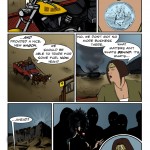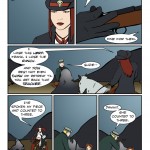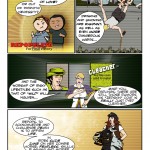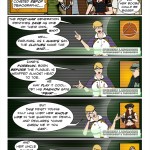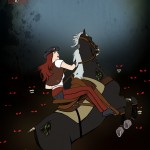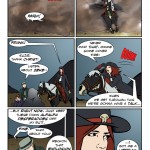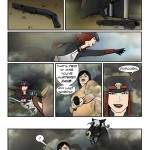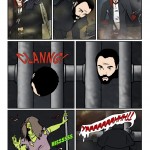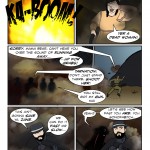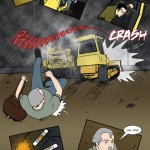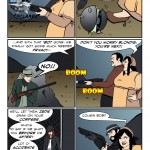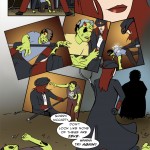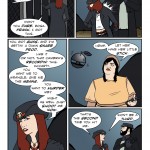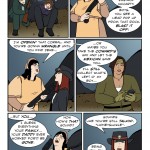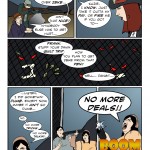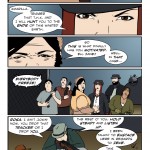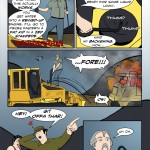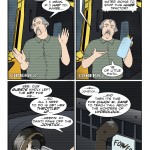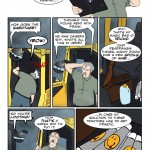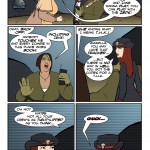Longtime readers will know of my love for Sergio Leone’s westerns, particularly
The Good, the Bad, and the Ugly. I may have even gone so far as to call that particular film his masterpiece.
If you’re familiar with Leone’s work, you might be about to argue with me… and I’ll admit, you might very well be right. As a wizened old Dagobah muppet once said:
“there is another…”.

Once Upon a Time in the West is that other, and many consider it not only to be the pinnacle of Leone’s career, not only one of the greatest westerns ever made, but one of the best films ever made, period.
Why? That’s not something easily told. In fact, the first time that I watched it (and I can’t even remember the year), I don’t think I found it particularly memorable. Maybe I was too disappointed in the lack of Clint Eastwood, since I vaguely remember being in a big Man With No Name fanboy phase. Maybe it was a bad copy. I hadn’t revisited it since, even when I went into my western binge with the development of Zombie Ranch. Even after I found a 2-disc DVD set for $4 at my local Blockbuster’s closeout sale and decided “what the heck, I’ll own that”, I just had never gotten around to a viewing.
It comforts me that I’m not alone and that
articles like this exist, commisserating the notion that this is one of those movies you should see that you just (for whatever reason) don’t get around to seeing. Or even worse in my case, that I’d seen and (for whatever reason) remained unmoved. It was thus not really possible for me to jump in on the conversation with some of my film buff friends over the weekend as they hailed it as near perfection in cinema. I just nodded along, and then the next day decided I had a few hours to kill so I might as well dig out the DVD and give things a second look. That’s definitely one thing to warn people about going in, there’s a time commitment involved.
And a commitment of attention. I’ve spoken before about how the old-school classics found a way to be interesting without needing to throw action scenes at us every minute, and
Once Upon a Time in the West takes a stand on this right from the beginning, with a ten-minute sequence of three men waiting for a train. If that sounds reminiscent of the opening of
High Noon, it is unabashedly so, homaged along with several other classics by a director freely admitting his influences… Leone doing what we might think of as Quentin Tarantino’s shtick, when the latter was still barely 5 years old. But still, this particular sequence is unique. Barely any dialogue. No music. No sound, besides the kinds of sounds you only notice when you’re waiting for something to happen.
This is where I began to realize what one of the biggest problems was with my prior viewing. Last time, I had a crappy print shown on a tiny, crappy television. This time, I had it playing on a 40″ HDTV, and even though it wasn’t a Blu-Ray disc, the print was so clear and vivid that it about blows my mind to think it could get any better. Simply put, I think that in order to watch
Once Upon a Time in the West properly, you need to be able to see the pores in every craggy face. You should have the capability to notice that one of Charles Bronson’s eyes has slightly different irises from the other, because you’ll have the time and close-ups to do so. Leone wants to tell you his story through his visuals, through every carefully framed shot… so trying to get the sense of that on a small and low-rez screen is like being half-blind. If you don’t lose yourself in the audio/visuals, you’ll be on the outside of the storytelling; Leone leans so heavily on that part of his equation over, say, plot and dialogue, that if you don’t get fascinated by the cinematics, it might just seem boring.
Because really, it’s a much more somber film than his earlier westerns. And quieter. This is less a celebration of the untamed frontier than a funeral for it, albeit a moving one. The pacing reminds me a lot of
Shane, with much of the runtime devoted to the anticipation of violence rather than its commitment. Or as the
wikipedia article aptly puts it,
“Leone was far more interested in the rituals preceding violence than in the violence itself.”
In a way the opening of the film could be seen as a litmus test on the viewer. If you’re not being entertained by those three guys killing time waiting at a train station, then you might want to skip watching the rest, or at least save it for a day and time when you’re in the proper mood, with the proper environment. Let’s just say this time around, I had that going, and it makes all the difference.
Once Upon a Time in the West is a deliberate film, as harsh and beautiful as the desert that makes up its setting, where something as simple as the drip of water onto a man’s hat takes on a mythic significance. Like
Citizen Kane, it’s a movie first and foremost for those who love movies, the way
Watchmen could be said to be a comic for those who love comics. Not to say the story isn’t compelling or the characters and dialogue aren’t memorable, but it’s one of those films that’s fascinating to approach from the perspective of how it was made as much as the subject matter being presented; a movie where the director’s every choice matters.
And it’s a damn fine western, too. I’m glad I gave it a second look. If you haven’t even given it a first, consider doing so. Just don’t judge our Frank here by his namesake there; I don’t think either one would appreciate that.


